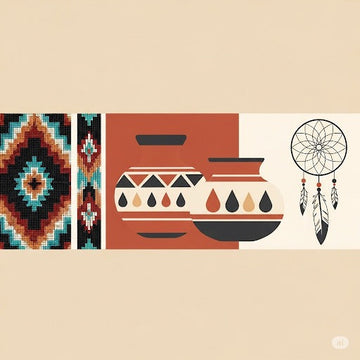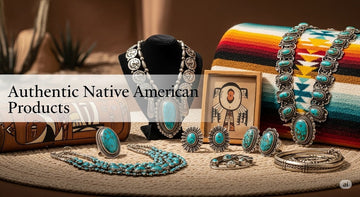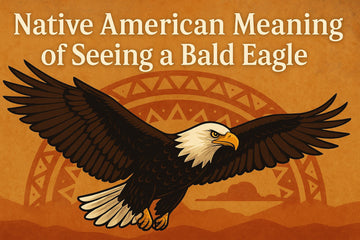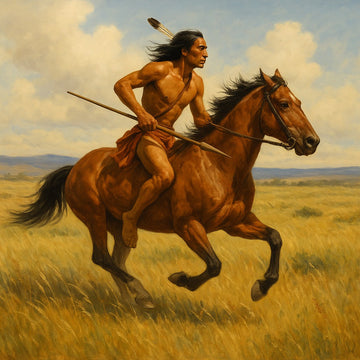For generations, Native American art has served as a powerful medium for storytelling, a vessel for spiritual beliefs, and a vivid expression of cultural identity. Far from being mere decoration, each piece of tribal art—from an intricate piece of beadwork to a beautifully crafted piece of pottery—reflects the spiritual and everyday lives of its creators. This art is a living history, a tangible connection to the past that continues to evolve and inspire. This blog post will take you on a journey through the diverse world of Native American art, highlighting its different forms, techniques, and its enduring role in preserving cultural heritage.
A Tapestry of Forms: Different Art Forms by Region and Tribe
The diversity of Native American nations is mirrored in the vast array of their art forms. Different regions and tribes developed unique styles, materials, and techniques based on their environment, resources, and cultural beliefs.
-
Southwest: The Ancestral Puebloans and their descendants, such as the Navajo and Hopi, are renowned for their exceptional pottery, intricate weaving, and exquisite silverwork. Their art often features geometric patterns, kachina figures, and symbols of nature.
-
Plains: Tribes of the Great Plains, including the Lakota and Cheyenne, are famous for their beadwork and quillwork. These intricate designs, often found on clothing, ceremonial items, and containers, tell personal stories or represent clan affiliations.
-
Pacific Northwest: The Indigenous peoples of the Pacific Northwest, like the Haida and Kwakwaka'wakw, are known for their bold and stylized traditional painting on carved totem poles, masks, and longhouses. Their art is characterized by formlines, ovoids, and U-shapes that often depict mythological beings and ancestral spirits.
-
Eastern Woodlands: Tribes such as the Iroquois and Algonquian are celebrated for their detailed wampum belts, which were used for storytelling and record-keeping, as well as their intricate carvings and basketry.
This regional and tribal diversity is what makes Native American art a truly endless source of fascination.
Hands of the Ancestors: Materials and Techniques Passed Down
The creation of Native American art is a deeply personal and spiritual process, with materials and techniques often passed down through families and generations. Artists work in a mindful way, honoring the resources they use and the traditions they uphold.
-
Beadwork: Before the introduction of glass beads from Europeans, tribes used natural materials like quills, shells, and bone. The intricate art of beadwork is a painstaking process, with each bead carefully sewn to create patterns that carry specific meanings and stories.
-
Pottery: Native American pottery is a testament to the artist’s connection to the earth. Clay is often hand-gathered, and techniques like coil building and hand-polishing are used to create beautiful, functional, and ceremonial pieces. The distinct black-on-black pottery of the Pueblo people is a prime example of a technique that has been preserved for centuries.
-
Weaving: Traditional weaving, particularly in the Southwest, is a revered art form. Navajo weavers, for example, have created some of the most iconic textiles in the world, using natural dyes to create complex patterns that symbolize the landscape and their spiritual beliefs.
This connection to the earth and the meticulous dedication to craft are hallmarks of authentic Native American art.
A Bridge to the Future: Contemporary Native American Artists
While rooted in tradition, Native American art is a vibrant, living tradition that continues to evolve. Contemporary Native American artists are breaking new ground, using both traditional techniques and modern mediums to express their unique perspectives. They are telling new stories, addressing modern challenges, and reclaiming narratives that have often been told by others. Artists like Jaune Quick-to-See Smith, a celebrated painter, and Preston Singletary, a glass artist, are pushing the boundaries of what is considered tribal art, while still honoring their cultural heritage. By engaging with contemporary issues through their art, they ensure that their cultural voices remain strong and relevant.
A Visual History: How Art Preserves Cultural Identity
Ultimately, the most profound role of Native American art is its ability to preserve cultural identity. In the face of historical attempts at cultural assimilation, art has served as a resilient and powerful means of survival. Each pattern, each symbol, and each technique is a link to the past. Art pieces are not simply objects; they are expressions of a worldview, a record of historical events, and a celebration of community values. Whether it's a dreamcatcher to ward off bad dreams or a ceremonial drum used in a powwow, these pieces are tangible reminders of a rich and enduring heritage.
Conclusion:
Native American art is a testament to the creativity, resilience, and spiritual depth of Indigenous peoples. It is a world of visual storytelling, where every piece of beadwork, pottery, or traditional painting has a story to tell. By supporting Native American artists, we not only acquire beautiful and meaningful objects but also contribute to the survival and flourishing of cultural expression. These ancient art forms, ever-adapting and forever relevant, ensure that the threads of heritage remain strong, weaving a legacy that will continue to inspire for generations to come.








